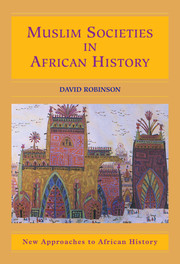1 - Muhammad and the Birth of Islam
Published online by Cambridge University Press: 05 June 2012
Summary
There are several ways to understand Islam and its emergence and development. In this book I employ two of those ways: an institutional approach and a historical approach. Chapter 2 deals with the institutional perspective, whereas this chapter features the key human figure in the emergence of the faith, Muhammad, and the context in which that faith emerged. I find it useful to understand the doctrine in light of the history to see how the beliefs and practices of Islam came to be.
The Setting of Muhammad's Life
Muhammad lived from 570 until 632 c.e. He did not become a public figure until relatively late in his life, much later than Jesus of Nazareth. His arena of activity was an area called the Hijaz, the western side of the Arabian peninsula (Saudi Arabia today) just across the Red Sea from Africa. The Hijaz had some connections to the two dominant powers of the day: the Byzantine or East Roman Empire, controlling the eastern Mediterranean, and the Sasanian Empire, centered in Iran. The Hijaz was off to the south, a periphery in relation to both of these states. In religious terms it was very diverse. It contained Jewish, Christian, and other monotheistic communities as well as practitioners of local cults – those whom Muslims later would call “pagans.” Muhammad came to associate himself with the monotheistic orientation, but he did not emerge from a particular tradition in the way that one could say that Jesus was rooted in, and then went beyond, Jewish practice.
- Type
- Chapter
- Information
- Muslim Societies in African History , pp. 3 - 10Publisher: Cambridge University PressPrint publication year: 2004



